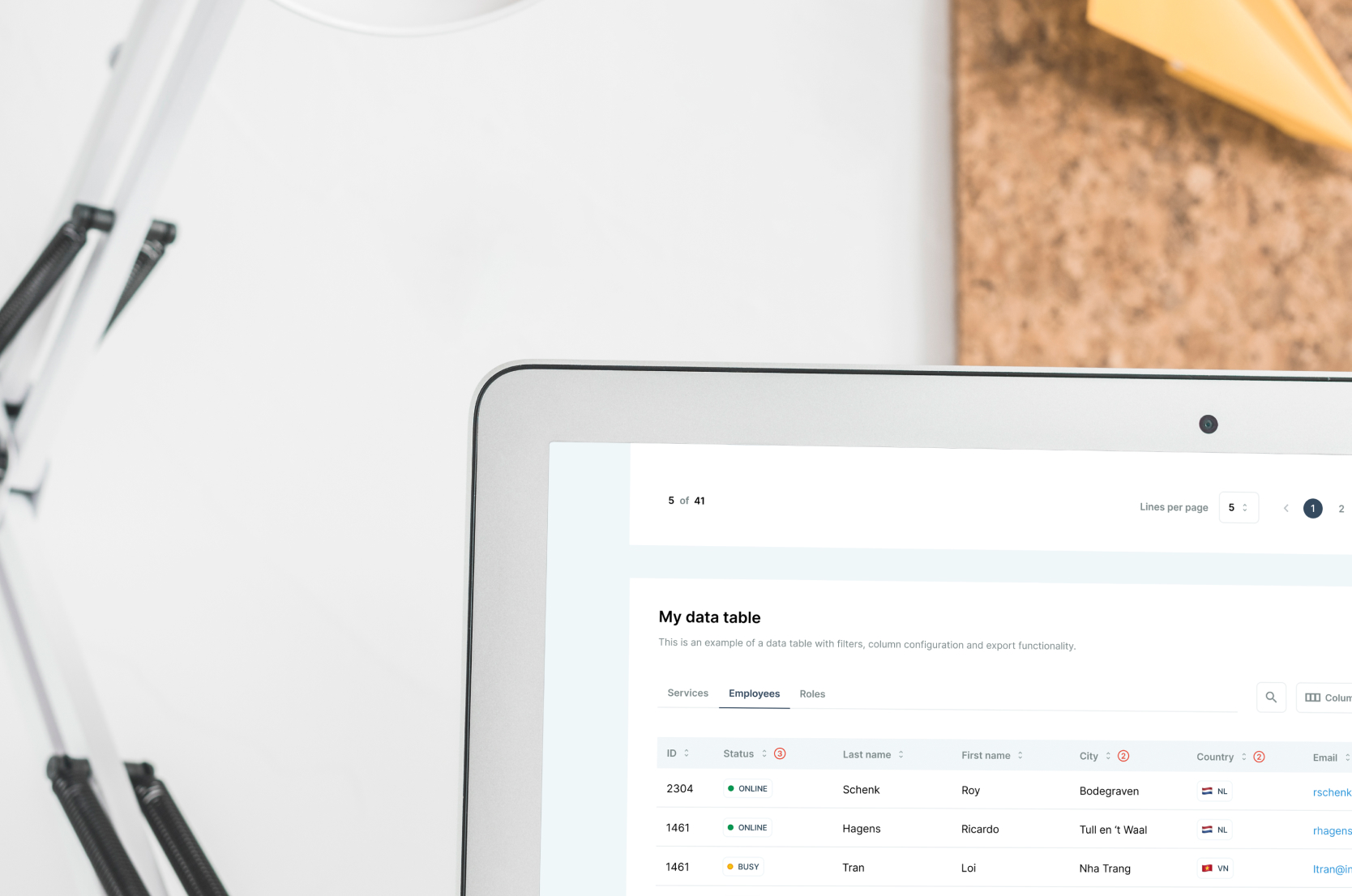
The Challenge of Data-Rich Tables
When designing tables, we often encounter obstacles. In some projects, users frequently deal with datasets containing hundreds or even thousands of rows, as well as specific needs. What is relevant for one user may not necessarily be interesting for another. Another challenge is the limitation of screen space: one user may access our software on a large office screen, while another uses an iPad on-site. Keeping these challenges in mind, I have developed solutions that enhance the user experience.
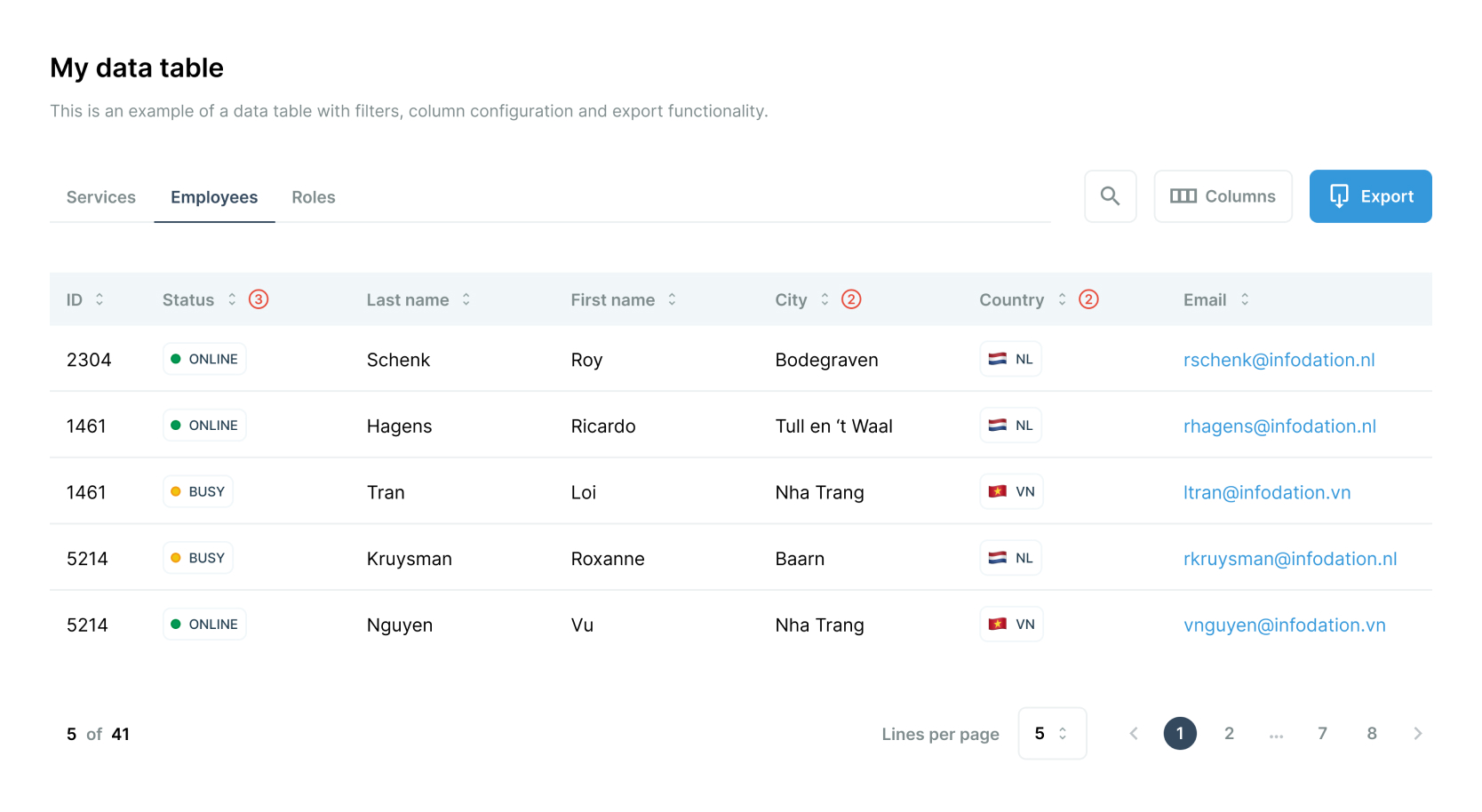
Filtering: Display What You Need
One of the most effective ways to make a table manageable is to give users the ability to filter data. This allows them to focus only on relevant information. Within our projects, we implement filters in various ways:
- Dropdown filters: Users can select specific values within columns, such as categories or dates.
- Combining multiple filter options: By adding multiple criteria, users can refine complex datasets.
- Showing relevance: Filters that have already been applied are clearly displayed so users know what data they are seeing.
With this approach, we at Infodation ensure that even the largest datasets remain organized.
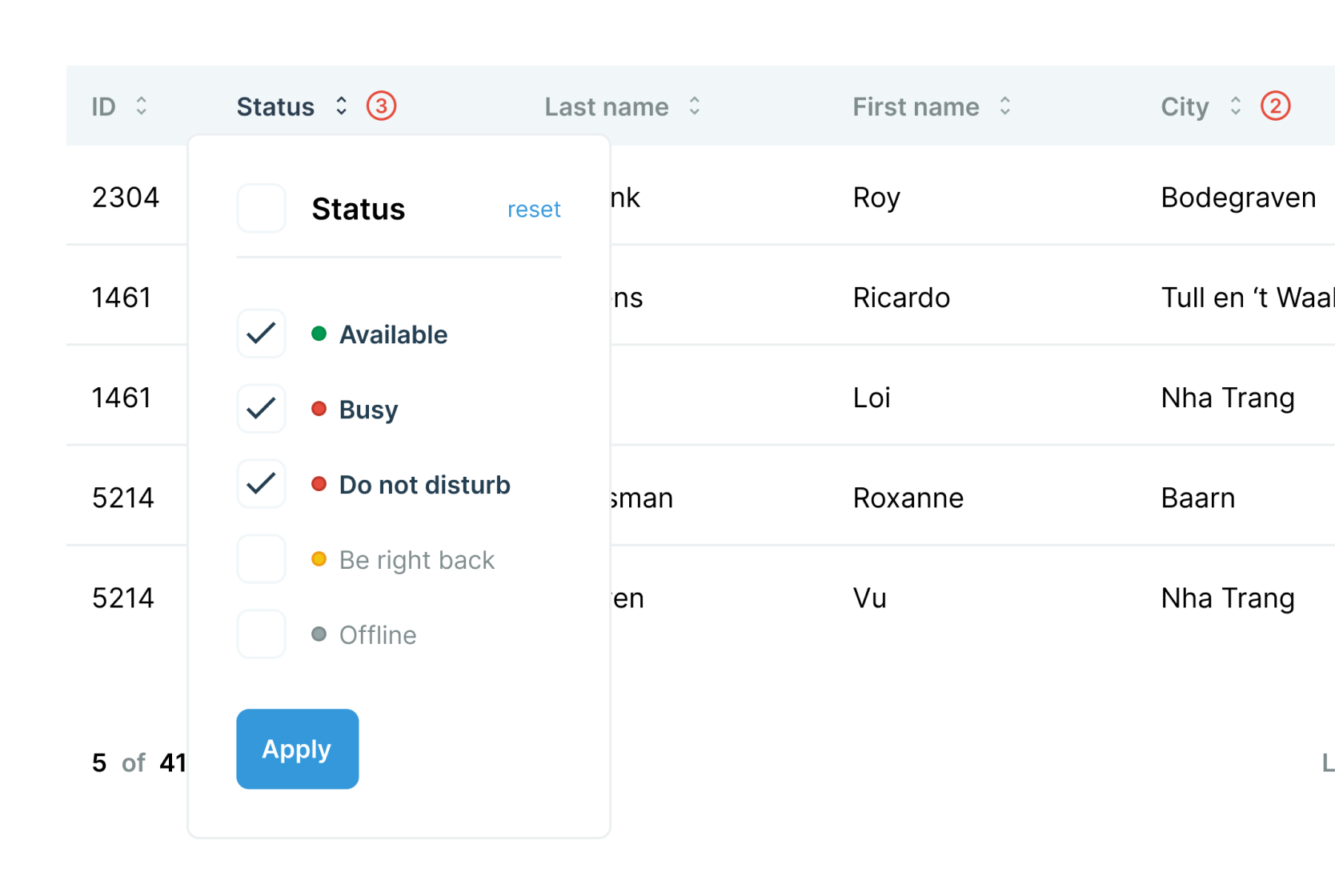
“Het ontwerpen van tabellen die zowel functioneel als gebruiksvriendelijk zijn, kan een flinke uitdaging zijn”
Configureren en verslepen van kolommen
Elke gebruiker heeft andere prioriteiten. Door tabellen configureerbaar te maken, kunnen gebruikers hun ervaring personaliseren. Onlangs hebben we voor een klant tabelconfiguratie geïmplementeerd, waarbij we de volgende functionaliteiten ontworpen en ontwikkeld hebben:
- Kolommen herschikken: Gebruikers kunnen kolommen eenvoudig verslepen om ze in de gewenste volgorde te plaatsen.
- Kolommen in- of uitschakelen: Gebruikers bepalen zelf welke kolommen worden weergegeven, zodat overbodige informatie wordt verborgen.
De klant was enorm blij met deze slimme update, want dankzij deze functionaliteiten hebben de gebruikers voortaan zelf de controle over hoe zij data bekijken.
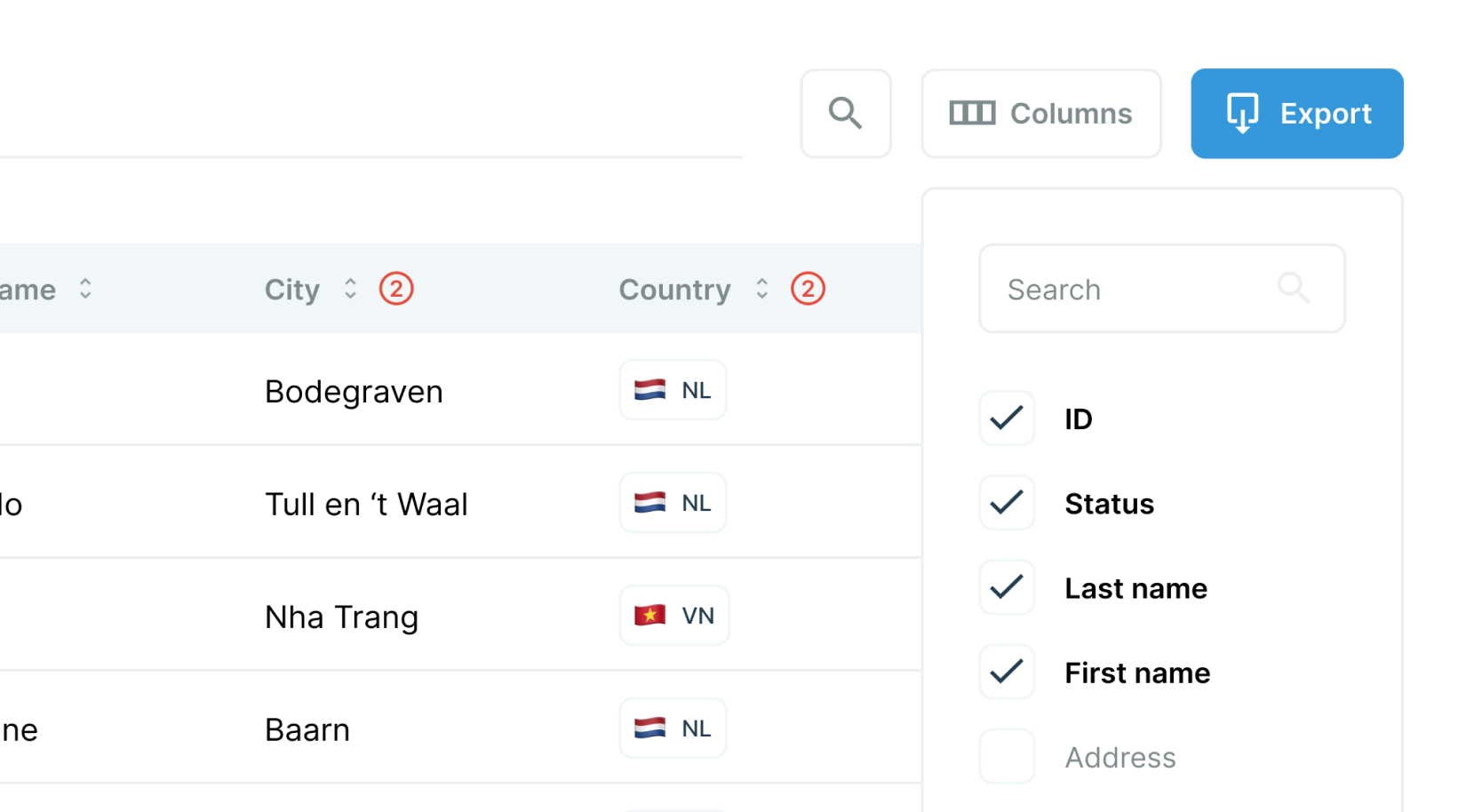
Data exporteren
Soms is het nodig om data buiten de applicatie te gebruiken, bijvoorbeeld in spreadsheets of rapporten. Door een exportfunctie aan te bieden, maken we dit proces eenvoudiger. Bij vrijwel al onze klanten waar veel met tabellen gewerkt wordt, ontwerpen we exports. Deze bijvoorbeeld beschikbaar in CSV, Excel en PDF, afhankelijk van de behoeften van de gebruiker. Daarnaast kunnen gebruikers ervoor kiezen om alleen gefilterde data te exporteren of ervoor kiezen om exports geautomatiseerd te genereren, bijvoorbeeld iedere vrijdagmiddag om 17.00 uur. Een goed ontworpen exportfunctie verhoogt de waarde van een applicatie in mijn ogen aanzienlijk.
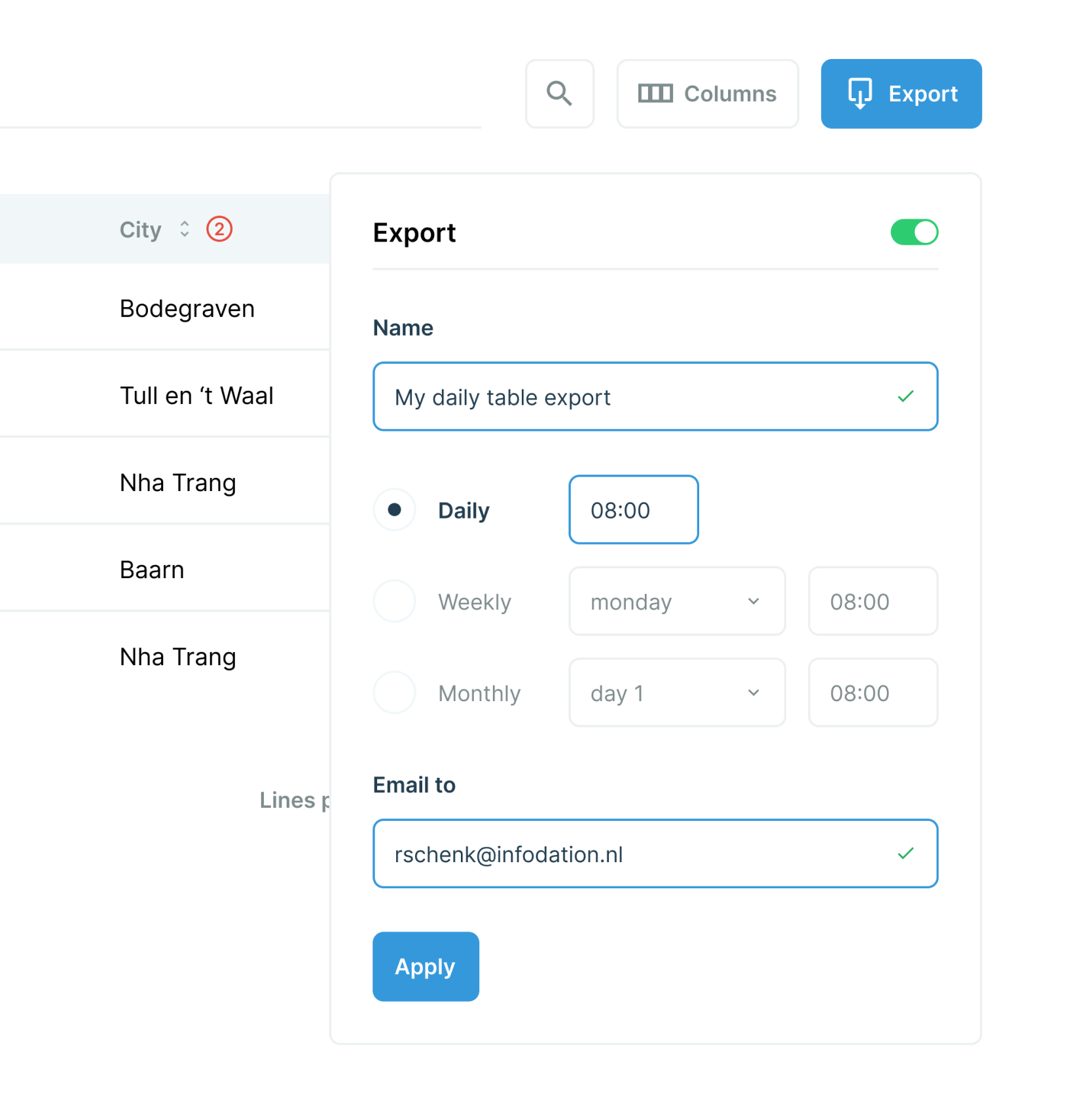
Slimme zoekfuncties
Een andere manier om gebruikers te helpen snel de juiste data te vinden, is door een krachtige zoekfunctie te integreren. Met een slimme zoekfunctie kunnen gebruikers een trefwoord invoeren dat in elke kolom wordt doorzocht. Terwijl de gebruiker typt, worden mogelijke matches getoond. Dankzij deze functies kunnen gebruikers zonder frustratie door grote hoeveelheden data navigeren!
Conclusion
Het ontwerpen van tabellen die grote hoeveelheden data bevatten, vereist een zorgvuldige balans tussen functionaliteit en gebruiksvriendelijkheid. Door filtering, configuratie-opties, exportmogelijkheden en slimme zoekfuncties te combineren, kunnen we de gebruikers van onze software een intuïtieve ervaring bieden. Deze strategieën zijn niet alleen praktisch, maar verbeteren ook de productiviteit en tevredenheid van gebruikers.










